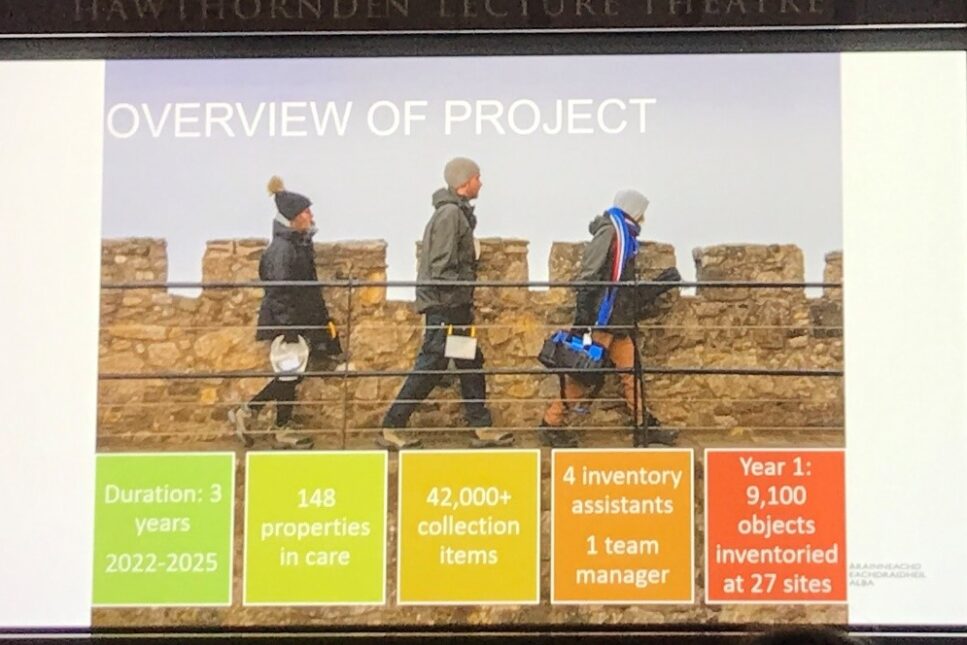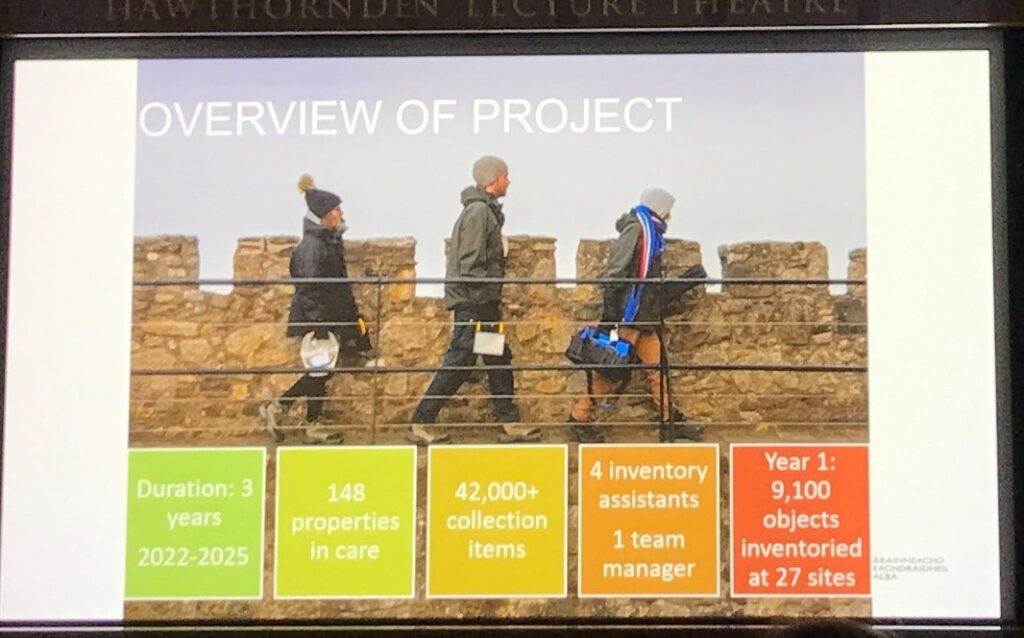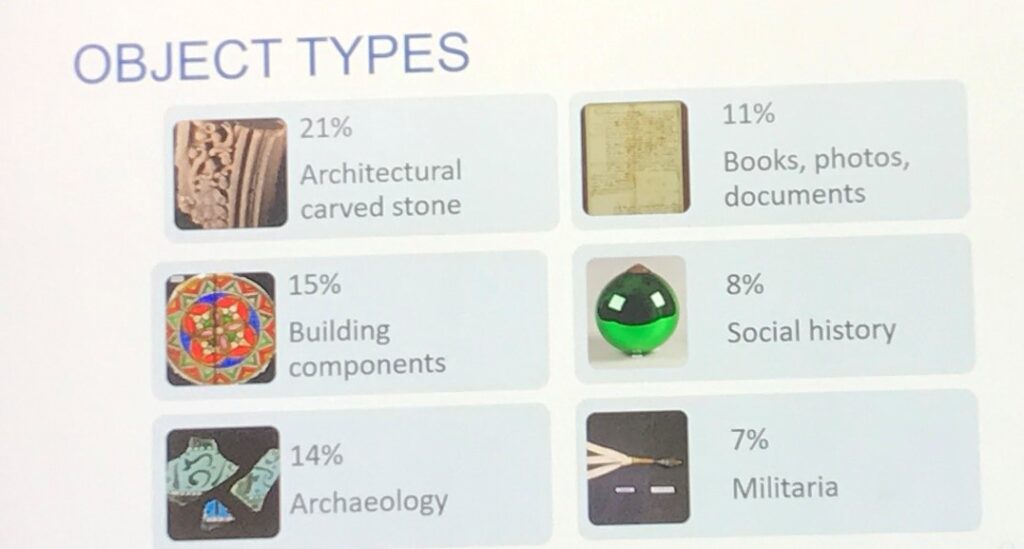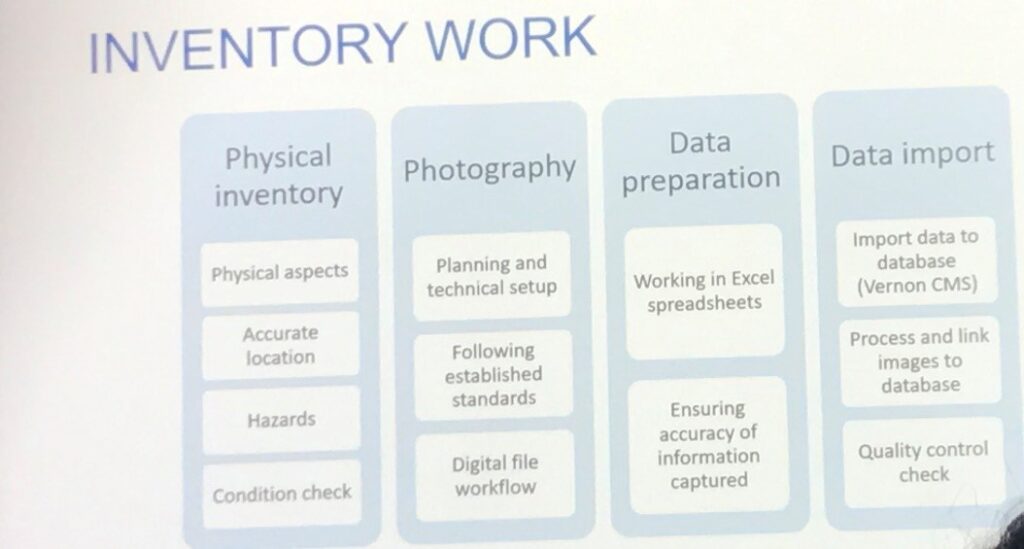
Ross Irving, Collections Registrar and Fiona Moorhead, Collections Systems Manager and Collection Inventory Project Manager.
This project is the first full review of Historic Environment Scotland’s portable objects and with 148 properties in their care it came with a range of interesting challenges to tackle and overcome.
The project spans 3 years and a dedicated inventory team consisting of 4 inventory assistants and a team manager has been put together to deliver this to deadline. An estimated 42,000 objects need to be checked and documented. These consist of a wide range of objects including architectural carved stone, books, photos and documents, building components, social history, archaeology and militaria. There is also an understanding that the total number of objects is likely to grow as the project develops and additional items are found. These consist of previously undocumented objects, objects found within already documented collections and newly identified objects. Of the 42,000 objects, 42% are on display and only 21% are stored centrally. The remaining collection is dispersed across a range of sites including military sites, monuments, castles and historic houses. HES are including loans as part of the inventory project with around 16% of the objects reviewed being loans. They will liaise with lenders to agree methodologies ahead of working on sites containing loans, so they may be in touch with your organisations soon.


Before beginning any documentation there were a number of considerations the team needed to explore such as consistency in documentation standards and how this could be impacted when working at ‘off the grid’ sites with limited resources to hand. The team also needed to consider the potential risks involved, for example hazardous objects and team welfare when working in remote areas. They began by developing a 6-month pilot project to test its viability and consulted colleagues to understand the challenges of different sites. They also conducted site visits to consult colleagues working on the ground and gain their insight. When considering the equipment needed it was clear that there would be limitations on what could be used at certain sites. For example, a site accessible only by boat brought time restrictions on access due to tides as well as limits on equipment due to what could be safely transported. Some sites would also not have power to connect to so batteries were a must as well as waterproof equipment if possible. As the team needed to photograph objects, they also consulted their digitisation colleagues to learn how best to photograph objects and what equipment they would need to do this consistently at each site. The site visits also informed on the PPE that may be needed for staff and indicated where staff would likely need welfare units on site.
The team also needed to agree the inventory standard they would be working to. They decided that they would develop a set of core fields which mapped to their CMS. Fields included physical description, location, hazards, condition check and dimensions. The team work in Excel spreadsheets which allows for bulk importing to update their database and means the information can be published to their collections online page regularly. This means the collections become publicly accessible as the project progresses. Once the initial details were agreed HES then arranged relevant training needed before beginning.

As with a range of projects, additional challenges came to light once the project was underway and the team work to tackle these as they come up. For example, physical access to some collections is difficult such as the stone stores and objects located in areas that are exposed to the elements. The team have also developed a system of assigning temporary numbers to newly identified objects as well as objects where the numbers are no longer visible due to external storage for many years. These challenges will likely lead to developments such as changes to the acquisitions process and new methods for marking objects.


Overall, the project is progressing well and on target. The team use Power BI to summarise the work they have completed, communicate to stakeholders and understand whether they will continue to be on target to complete the project within 3 years. So far, the team have reviewed around 9,100 covering 27 sites around 20% of which are newly identified objects.

Thank you to Historic Environment Scotland for an informative and insightful talk, I’m sure UKRG members will agree we would love to get an update on the project as it nears completion.

 Instagram
Instagram  LinkedIn
LinkedIn  Twitter
Twitter  My Account
My Account